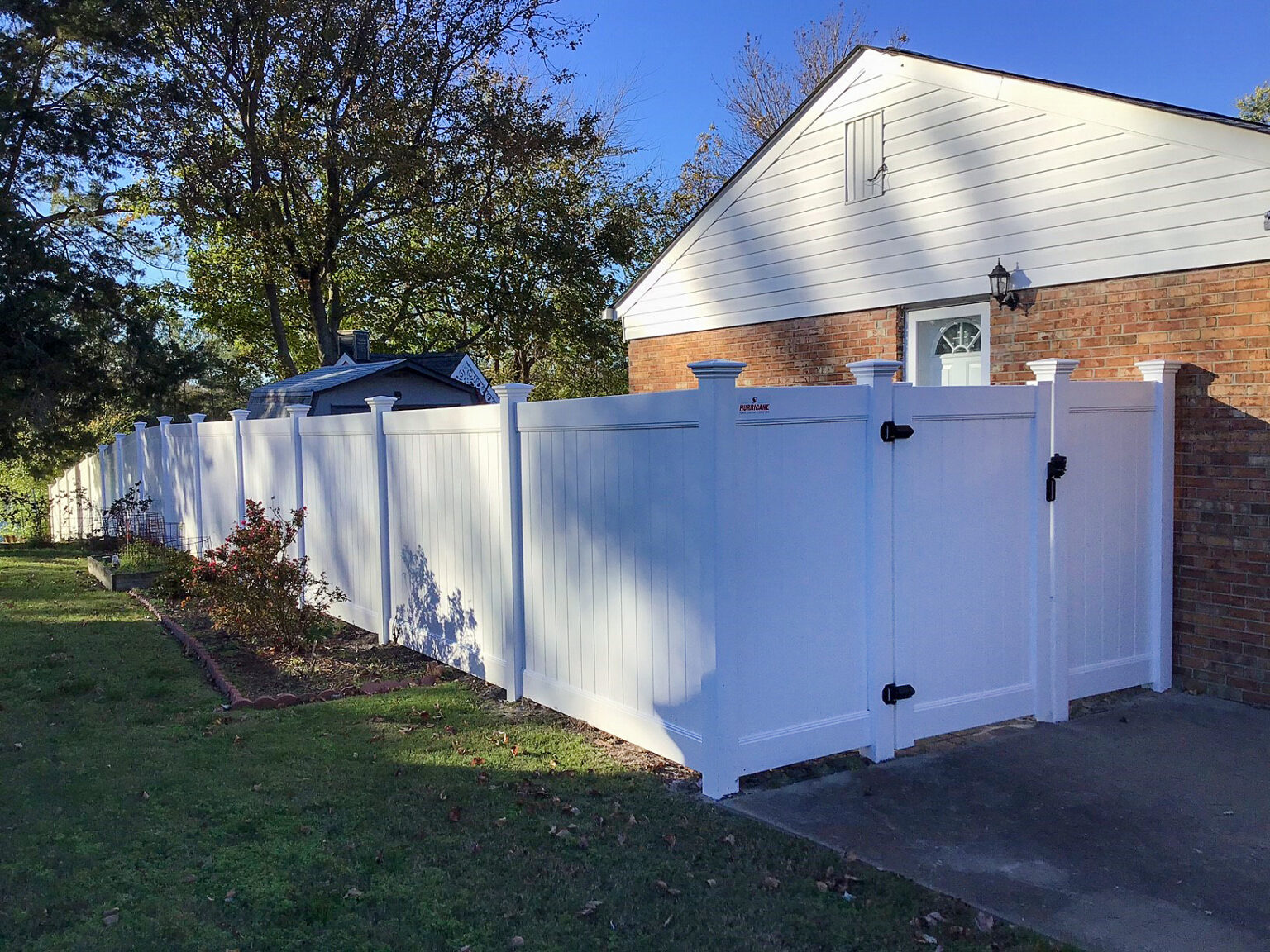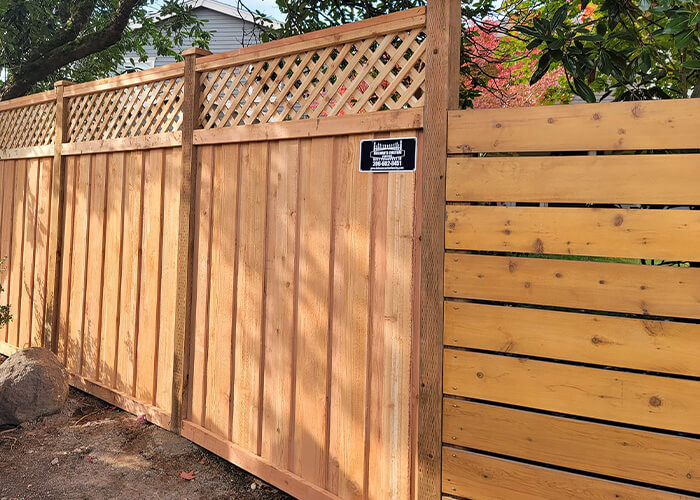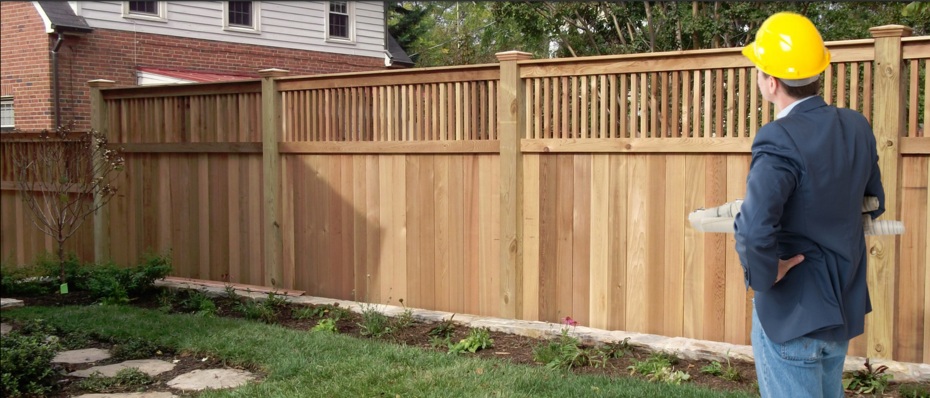Clues You Need Immediate Fence Repair Before Damage Gets Worse
Wiki Article
Just How to Recognize Typical Issues That Call For Immediate Fence Repair Work
When it pertains to maintaining your fencing, it is vital to detect concerns before they come to be bigger issues. Consistently inspecting for signs of decaying wood, leaning panels, or rust can save you money and time over time. You might not realize just how weather and parasites can jeopardize your fencing's stability. Let's explore the common indications that show your fence requires prompt attention, so you can keep your residential or commercial property secure and looking its finest.Indicators of Rotting Timber in Wooden Fences
Have you noticed your wooden fence looking a bit worse for wear? If so, it could be time to look for signs of decomposing timber. Check out the base of the messages and panels for soft areas. That's a clear indication of rot if you push on the timber and it really feels mushy or collapses. Next, try to find discoloration or dark areas on the timber-- these often signal wetness damage. Focus on any type of peeling paint or coating, as this can reveal the timber to more decay. Furthermore, a pungent, musty smell can suggest fungal growth. Don't fail to remember to examine connections and joints; if they hang or crumbling, the timber underneath is most likely endangered. By catching these indicators early, you can protect against extra extensive damage and maintain your fence standing solid. Routine upkeep is crucial to prolonging the life of your wooden fence.Leaning or Tilting Fencing Panels
If you have actually observed your fence panels leaning or turning, it's vital to recognize what triggered it. This concern may show underlying structural damages that requires your attention. Let's check out the typical reasons and the repair service choices offered to obtain your fence back in shape.
Root Causes Of Leaning Panels
It's usually an indication of underlying concerns that need dealing with when you see your fence panels tilting or leaning. One common reason is insufficient water drainage; excessive water can erode the dirt around the fence posts, weakening their assistance. One more culprit might be solid winds or tornados that push versus the panels, particularly if they're not properly anchored. Additionally, the all-natural settling of dirt over time can create messages to change, causing a tilt. Parasites, like termites, can jeopardize the integrity of wood panels, creating them to lean. Lastly, inadequate setup practices may lead to panels not being securely set, leaving them prone to leaning under stress. Address these problems without delay to maintain your fence's integrity.
Indicators of Architectural Damage
Discovering turning or leaning fence panels can be disconcerting, as these problems frequently suggest architectural damage that needs prompt focus. When your fence begins to lean, it might signify that the posts are moving or that the dirt around them has actually deteriorated. Pay very close attention to voids between articles or panels, as these can likewise suggest instability. deck builder. Furthermore, look for cracks or splintering in the timber, which can weaken the general structure. If you see corrosion or deterioration on steel components, it could compromise the integrity of the fence. Keep in mind, disregarding these indications can cause a lot more serious damages down the line, so it's necessary to analyze the scenario immediately and do something about it before it aggravatesRepair Work Options Available

Rust and Deterioration in Metal Fences
If you own a steel fence, you may discover corrosion and corrosion slipping in over time, specifically if it's exposed to wetness. These issues not just affect the appearance of your fencing yet can likewise compromise its structural honesty. To identify corrosion, try to find reddish-brown spots or spots, which indicate the metal is oxidizing. Deterioration can spread out promptly if left without treatment, leading and compromising the fencing to pricey repairs.To deal with corrosion and rust, you need to clean up the click here influenced areas with a cord brush and apply a rust-inhibiting primer. Once the primer dries out, think about repainting the fencing with a weather-resistant paint to shield it additionally. Normal upkeep, such as inspecting for signs of corrosion and touching up paint as needed, will help extend your fence's life-span. Resolving these concerns promptly assures your metal fencing continues to be solid and visually appealing for many years to come.Cracks and Splits in Vinyl Secure Fencing

Causes of Vinyl Damages
Vinyl fencing is popular for its sturdiness, yet it can still struggle with cracks and divides because of various factors. One significant reason is extreme temperature variations. It can deteriorate the material over time when plastic increases in the warmth and agreements in the cool. Furthermore, direct exposure to rough sunshine can lead to UV degradation, making the plastic breakable. Physical impacts, like unintended accidents or heavy branches, can likewise produce fractures. Poor installation or using low-quality products can exacerbate these issues. Age plays a role; older plastic fencing is a lot more prone to damage. Routine inspections can aid you identify these factors before they bring about considerable issues. Take positive steps to guarantee your fence continues to be solid and intact.Repairing Cracks Properly
Cracks and splits in your plastic secure fencing can be concerning, resolving them promptly can avoid more damage and keep the fence's look. Initially, analyze the dimension of the crack. For tiny splits, a vinyl fixing kit often includes sticky that can bond the sides, providing a smooth solution. Clean the area thoroughly before applying the sticky, ensuring it adheres correctly. For larger divides, you could require to make use of a vinyl spot. Cut the patch to size, use adhesive around the sides, and press it firmly onto the split. Enable it to treat based on the supplier's guidelines. Routine upkeep and fast repairs can extend your fence's lifespan, keeping it looking excellent for several years ahead.Loosened or Missing Fencing Posts
Missing or loosened fencing messages can undermine the stability of your whole fencing framework. If you observe any type of blog posts leaning or wobbling, it's vital to attend to the problem immediately. Look for any kind of indications of movement, as this can lead to more damages in time. You can easily evaluate the trouble by providing each post a mild shake-- if it really feels unpredictable, it's time to take action.For missing out on articles, you'll need to replace them asap to maintain your fencing's integrity. When you mount new posts, see to it they're firmly secured in the ground with concrete or gravel for added stability. If an article hangs, tighten it by adding additional support or driving it deeper into the ground.Ignoring these concerns can lead to larger issues, like gaps in your fencing or perhaps total collapse. Maintain an eye on your blog posts and stay positive concerning repair work!Damages From Weather Condition and Natural Elements
Weather condition and natural aspects can ruin your fencing, resulting in numerous kinds of damage that call for timely interest. Hefty rain can trigger wood to rot, making it unpredictable and weak. Snow accumulation could bend or break panels, while strong winds can uproot fence posts or create sections to lean.If you see cracks or splintering in wooden fences, it suggests drying out because of intense sun direct exposure. Metal fences can rust if protective coatings use off, specifically in seaside or moist areas.Inspect your fencing frequently after storms or severe climate to capture any type of damage early. Addressing these issues rapidly can save you from costly repairs down the line. Don't wait until a tiny trouble develops into a major one; remain proactive and keep your fence leading shape to keep both performance and visual charm.Pest Infestation and Termite Damages
When you discover indicators of parasite invasion or termite damage, it's vital to act rapidly to avoid further devastation. Seek mud tubes along your fence or hollow-sounding wood, as these show termites go to work. You could likewise see tiny holes or frass, which is termite droppings resembling sawdust. If you identify any one of these indications, it's time to evaluate the damage.Don' t wait till it's also late; bugs can jeopardize your fencing's integrity. Check the surrounding area for beetles or ants, as they may be adding to the issue. If you believe an infestation, take into consideration getting in touch with a pest control expert to deal with the issue.repairing and confirm or changing damaged sections of your fence promptly not only recovers its strength but likewise protects against bugs from spreading out further. Remain alert to keep your residential property safe and secure and pest-free.Often Asked Inquiries
Just how Often Should I Inspect My Fencing for Damages?
You must inspect your fencing at the very least twice a year, preferably throughout spring and fall. Routine checks assist you identify damages early, saving you money and time on repairs while preserving your building's look and protection.Can I Repair a Fence Myself or Hire a Professional?
You can certainly repair a fence on your own if you have the right tools and skills. Nevertheless, working with a specialist guarantees quality work and conserves you time, specifically for complicated fixings or extensive damage.What Tools Are Required for Basic Fence Fixings?
For basic fence fixings, you'll require tools like a hammer, screwdriver, pliers, a saw, a degree, and measuring tape. deck builder. Depending on the repair, you could likewise require nails, screws, or substitute boardsExactly How Much Does Fencing Repair Work Generally Price?
Fence repair work prices vary commonly, however you can anticipate to pay in between $200 and $1,500 depending on products, labor, and degree of damages. It's wise to get multiple quotes for the ideal deal.
When Is the most effective Season for Fencing Repairs?
The most effective time for fence fixings is during light weather, generally in springtime or early autumn. You'll avoid extreme temperatures, making it easier to function and making certain the products set properly for lasting toughness (deck builder). Noticing turning or leaning fence panels can be disconcerting, as these concerns typically show architectural damages that needs immediate interest. Absent or loose fencing blog posts can weaken the security of your whole fencing structure. Snow build-up could bend or break panels, while solid winds can uproot fencing messages or cause sections to lean.If you see fractures or splintering in wood fencings, it's a sign of drying out due to intense sun exposure. Steel fences can corrosion if safety coverings wear off, particularly in moist or seaside areas.Inspect your fence frequently after storms or extreme climate to catch any damage early. Fence repair work expenses vary commonly, yet you can expect to pay in between $200 and $1,500 depending on products, labor, and extent of damageReport this wiki page